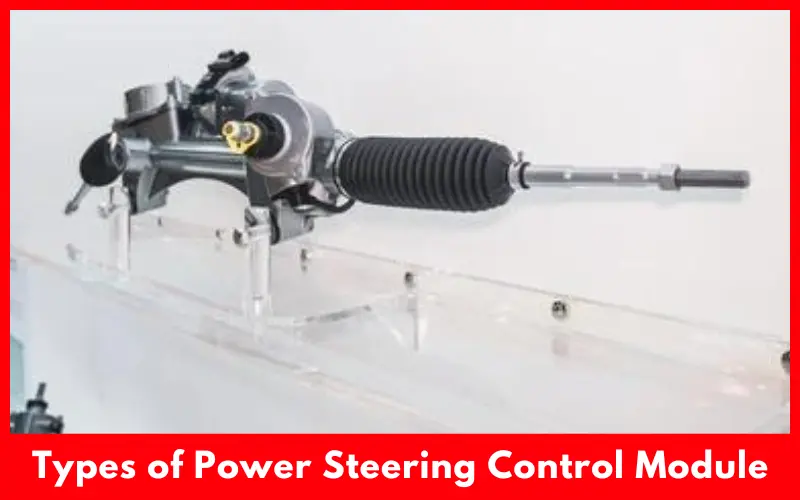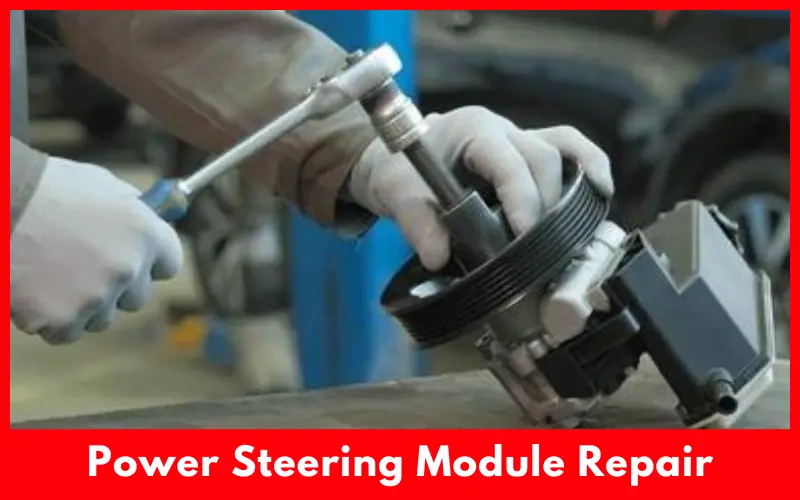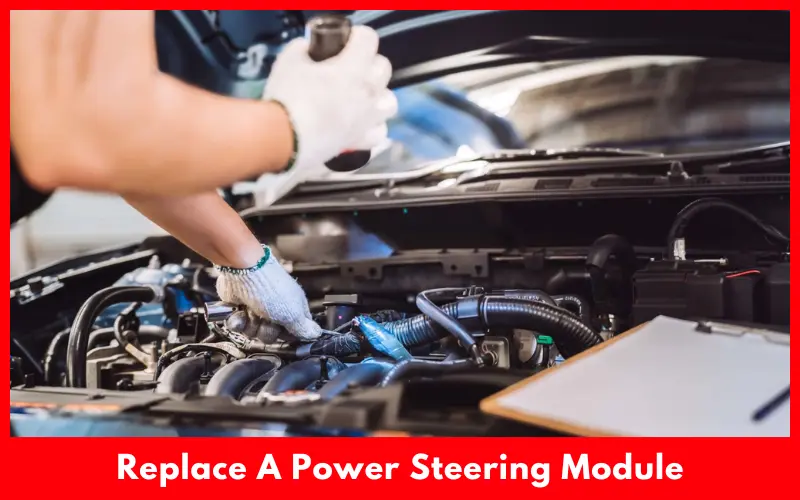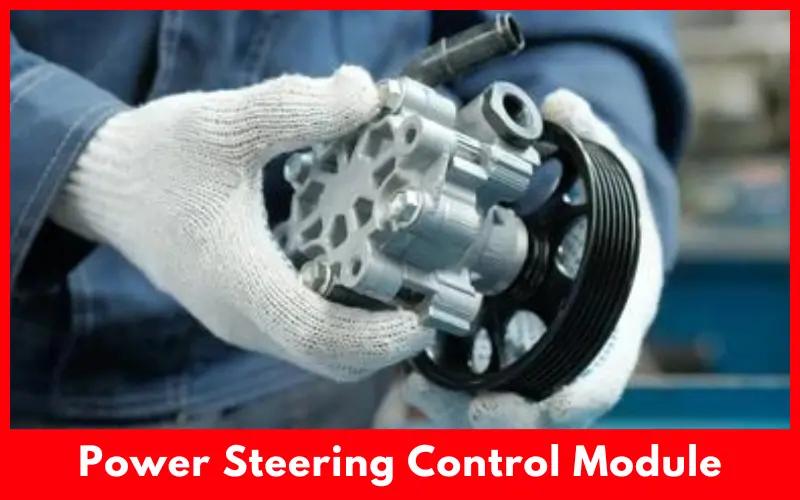Power steering control module is an essential feature in modern vehicles. With power steering, automobile drivers can safely steer their vehicles since the steering is not necessarily light in a manual steering system.
Power steering assist system aids the automobile driver in steering the vehicle. This technology was introduced years ago, and a crucial part of the technology is the power steering module.
Power steering modules are fundamental in modern vehicles. Therefore, it is essential to understand the basics of these power steering modules, why they are essential, how they work, and what you need to know to maintain them.
Article Summary
- What is Power Steering Control Module?
- Types of Power Steering Module Systems
- What is A Power Steering Module?
- How Does A Power Steering Module Work?
- Components of A Power Steering Module
- Benefits of Power Steering Control Modules
- Common Problems of Power Steering Modules
- How To Fix Power Steering Control Module
- Conclusion
What is Power Steering Control Module?
Power steering control module is an automotive component that provides steering torque for vehicles, I want to start by explaining what exactly power steering is.
Power steering is a system that aids the driver in driving a vehicle. It helps the driver in the specific task of steering by reducing the forces required to turn the steering wheel.
Without power steering, turning the steering wheel is much more arduous, especially at low speeds or when the car is stationary.
Types of Power Steering Module Systems
There are three main types of power steering systems:

Hydraulic Power Steering (HPS): Using a pump driven by the engine, it generates hydraulic pressure for power steering.
Electric Power Steering (EPS): Uses an electric motor to assist with steering.
Electro-Hydraulic Power Steering (EHPS): Combines elements of both hydraulic and electric power steering.
What is A Power Steering Module?
A power steering module (alternatively, power steering control module) is an electronic control device used in electric and electro-hydraulic power steering systems.
It is considered the heart of the power steering system, and is responsible for regulating the requested amount of assistance to the driver in function of the vehicle speed, the steering angle, and the driver input.
How Does A Power Steering Module Work?
The power steering module receives signals from car sensors distributed all over the car, including ones that read:
- Steering Wheel Position: Determines the angle and direction of the steering wheel.
- Vehicle Speed: Adjusts the level of steering assist based on speed.
- Steering Torque: Measures the force applied by the driver on the steering wheel.
The module uses this information to calculate how much power is needed (how hard the steering needs to be to keep the wheels in the same turn) and then it sends commands to the appropriate electrical motor or hydraulic pump to send the right amount of power to the tyres.
This results in the steering having a sense of ease, with good response and feel and with the minimum amount of energy needed from the driver’s hands.
Components of A Power Steering Module
A power steering module consists of several key components:
Control Unit: The central processor that receives sensor data and makes calculations.
Sensors: Devices that measure various parameters like speed, torque, and steering angle.
Actuators: Electric motors or hydraulic pumps that provide the steering assistance.
Wiring and Connectors: Electrical connections that link the module to sensors and actuators.
Benefits of Power Steering Control Modules
Power steering modules offer several advantages over traditional hydraulic systems:
Better fuel efficiency: Electric power steering systems do not require power all the time like hydraulic systems. Electric power steering uses power only when the steering assistance is required.
Better control: By adjusting the level of assistance dynamically according to driving conditions, it can help improve control.
Reduced Maintenance: Electric systems have fewer moving parts, reducing the need for regular maintenance.
- Safer: The module integrates with the rest of the car, such as stability control, anti-lock brakes and so on.
- Fuel Efficiency: Provides insight into how to maximise fuel usage, most commonly in hybrid vehicles.
- Fuel Economy: Measures and reports the amount of fuel used.
- Greenness: Guides drivers to greener driving practices.
- Road Condition: Notifies drivers of dangerous road conditions (icy, flooding, accidents and the like).
- Enhanced Safety: Integrates functions with vehicle systems such as stability control and anti-lock brakes to increase overall safety.
Common Problems of Power Steering Modules
Are power steering modules great? Yes! They sure are. But sometimes they develop problems, and here’s what you might look for:
Sensors Fail
If a sensor breaks, the module may not receive valid inputs, which could cause it to provide incorrect steering assistance.
Electronic Problems
Damage to a module’s wiring or connectors can disrupt the flow of information to and from that module and other components.
Software Glitch
The software controlling the control unit may contain bugs or errors that can interfere with the signal.
Wear and tear in actuators and other moving parts can reduce the effectiveness of the system over time.
How To Fix Power Steering Control Module
Power steering module repair is the process of repairing a power steering module in a vehicle’s steering and suspension system. This component controls how much steering assist the system applies, such as how much force is needed to turn the wheels during cornering.

It’s crucial for a smooth steering experience and is responsible for the way your vehicle handles on the road. If the power steering module isn’t working properly, your steering could feel hard or unresponsive, reducing the safety of the vehicle.
Typically, repairing a power steering module involves using diagnostic tools to determine what’s wrong, replacing components, and reprogramming the module if needed.
Proper power steering module repair requires a solid understanding of the vehicle’s electronic systems and should be taken care of by experienced technicians to ensure you get the best performance and are safe when you get behind the wheel.
Diagnosing Power Steering Module Issues
When the power steering module fails, it often illuminates an indicator light on the dashboard. Here is how you go about diagnose and service power steering:
Dashboard Warning Lights: If there is a warning light for the power steering system appear on the dashboard.
Unusual Noises In Power Steering Repair: People are much more likely to notice a strange noise, such as a howling, whining or squealing sound, when they turn the steering wheel. This noise may signal a failure or imminent failure in the power steering module or related components.
Steering Changes: If you notice it gets harder or less responsive, you may be dealing with a failing power steering module.
Detect the System: Use diagnostic tools all motor vehicles manufactured since late 1995 are required to carry onboard diagnostic systems (OBD-II). Your power steering issues may have error codes stored that your mechanic can read with a diagnostic scanner.
Maintenance of A Power Steering Module
Proper maintenance will help make your power steering module last longer and ensure your vehicle’s steering remains smooth and responsive. Here are some maintenance tips:
Regular Inspections: Have your power steering system inspected regularly by a qualified mechanic.
Check Fluid Levels: If your vehicle has an electro-hydraulic system, check the fluid level of your power steering (or similar) system regularly, and if needed fill it up.
Clean Electrical Connections: Ensure that all electrical connections are clean and free of corrosion.
Update Software: If your vehicle manufacturer releases updates to the power steering module, have them installed.
How To Replace A Power Steering Module
If your power steering module fails, you need to replace it immediately. Here is how they go about doing it:
- First, if your car overheated, wait until the engine is cool to the touch.
- Next, remove the black plastic cap over the idle air-control valve on the throttle body.
- Locate the power steering electric motor module and remove the wire connector from its three terminals.
- Next, remove the cover plate with 8 screws.
- Then, remove the module from the car.

Disconnect the Battery: Ensure the vehicle’s battery is disconnected to prevent electrical shocks.
Old Module, Be Gone: Find the power steering module and carefully unclip it from its mount.
Install Module New: Install the new module in place, checking that all connections are secure and correctly pointed.
Re-Program Module: Some power steering modules must be programmed in order to work properly with your vehicle. This is accomplished with special tools that the mechanic will have.
Check the System: The mechanic will check the power steering system to make sure it has sufficient fluid.
Install the System: The mechanic will install the power steering system on the car after it has been examined.
Test the System: The power steering system will be tested by the mechanic after it has been installed on the car.
The Future of Power Steering Modules
As automotive technology evolves, with more and more electrical and electronic devices used in cars, power steering modules are becoming more and more advanced. Accordingly, below are some trends in this field.
- Vehicles producing less energy waste.
- The network consisting of car computers is increasing safety belts tightness automatically.
- There is a lot of research devoted to brake energy recovery.
- Because of advanced in-car systems, the steering module takes on the new double role. Now the steering wheel is interacting with both the car and the driver.
- Braking distance decreases with the development of braking systems.
- Integration in Autonomous Driving: With the onset of true autonomous driving, future modules for power steering need to provide precision without any driver input.
- Enhanced Sensors: Enhanced sensors will deliver more precise readings, allowing power steering systems to perform more optimally.
Their connectivity: perhaps they’ll be part of the broader connected car ecosystem (which could also allow them to be updated remotely) and benefit from remote diagnostics and software updates.
Conclusion
The power steering module is an important piece in the modern power steering system, providing the ease and responsive steering drivers and passengers all expect. With a better understanding of how these power modules work, how to diagnose them, and how to maintain them, you are assured of having your power steering system operate at peak performance.
Not only is power steering essential for a vehicle, but as technology advances, the power steering module will continue to improve, increasing benefits and performance.
Anyone looking to increase their knowledge of one of the most important automotive technologies should learn the basics of power steering modules.

